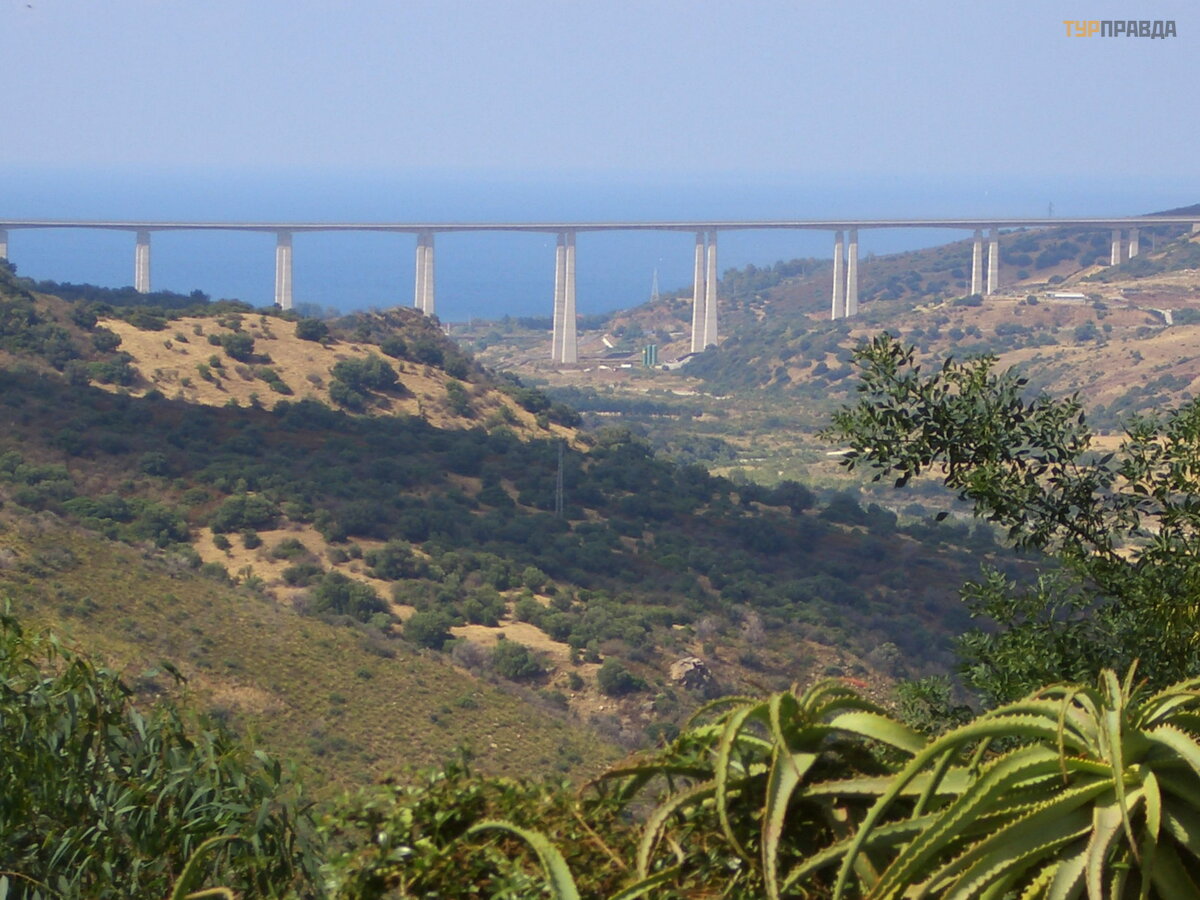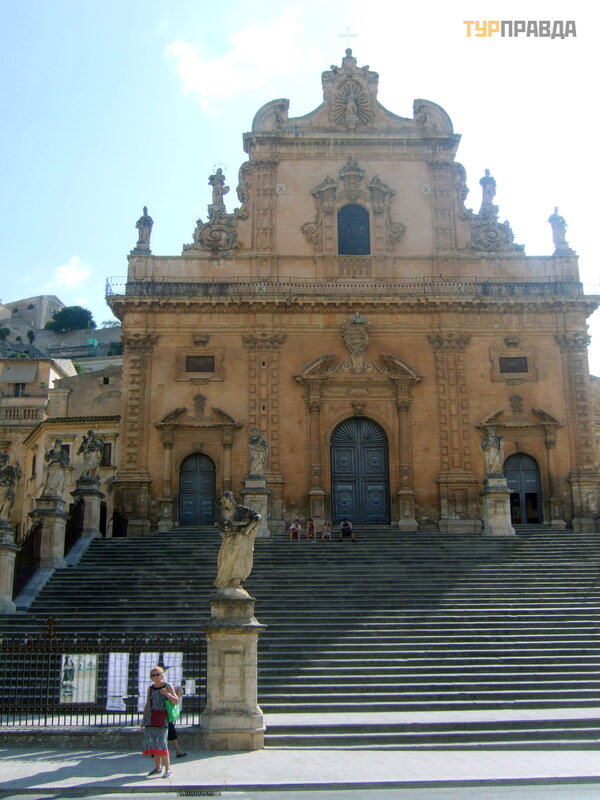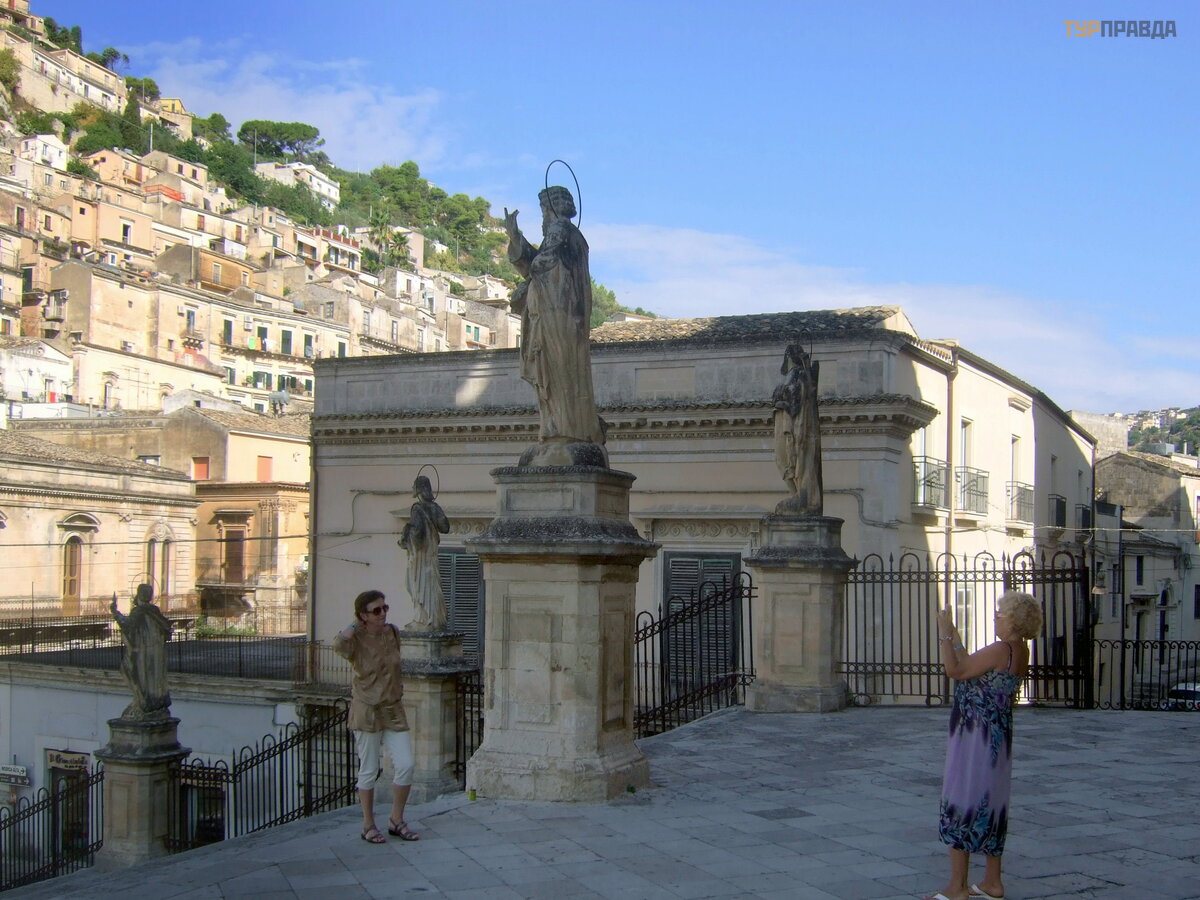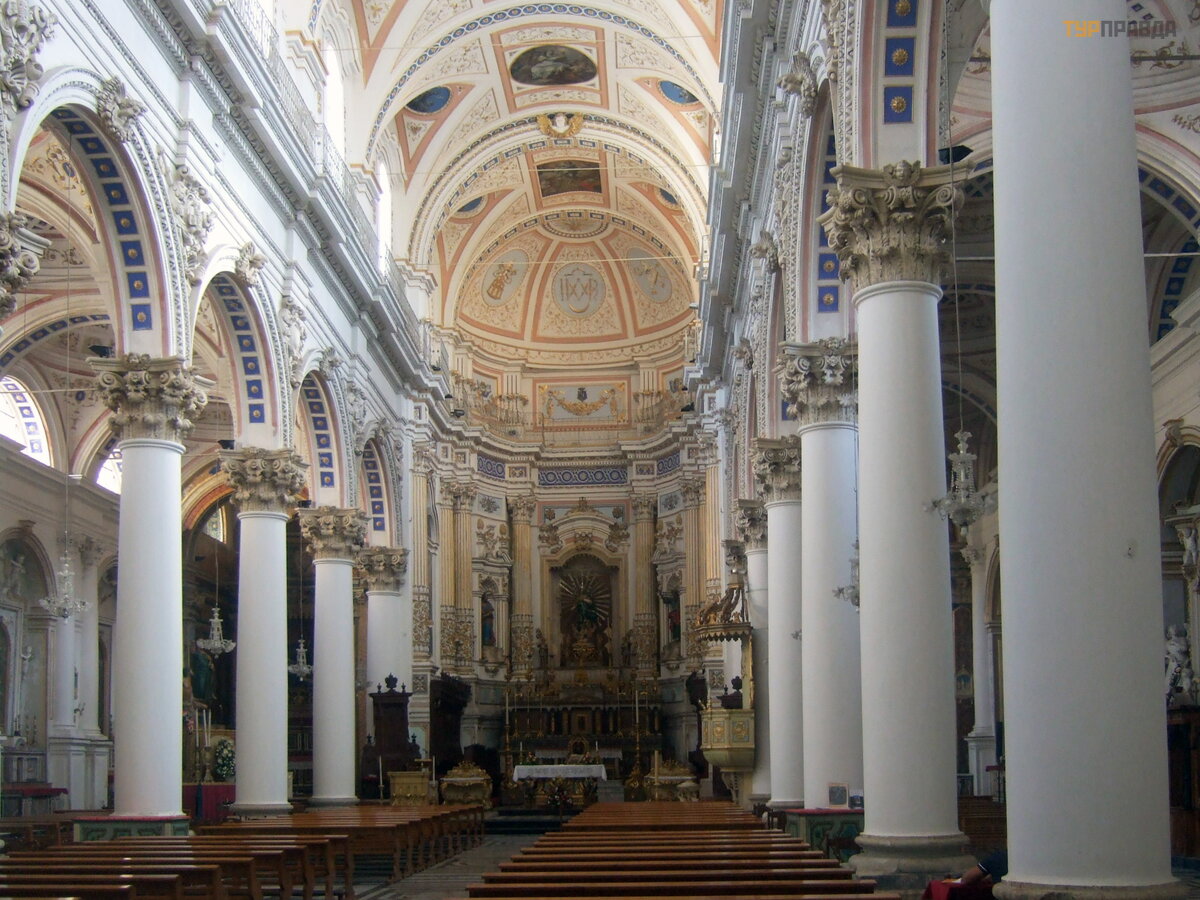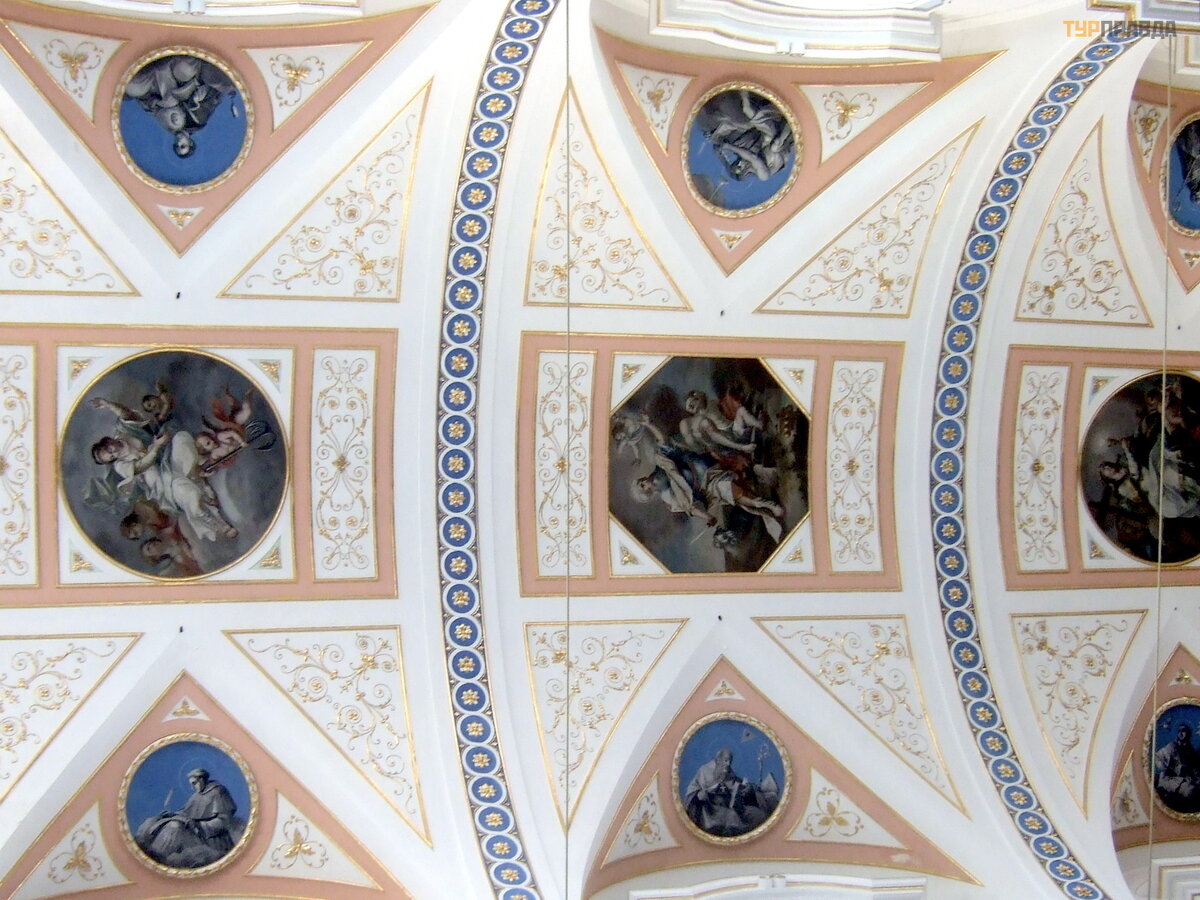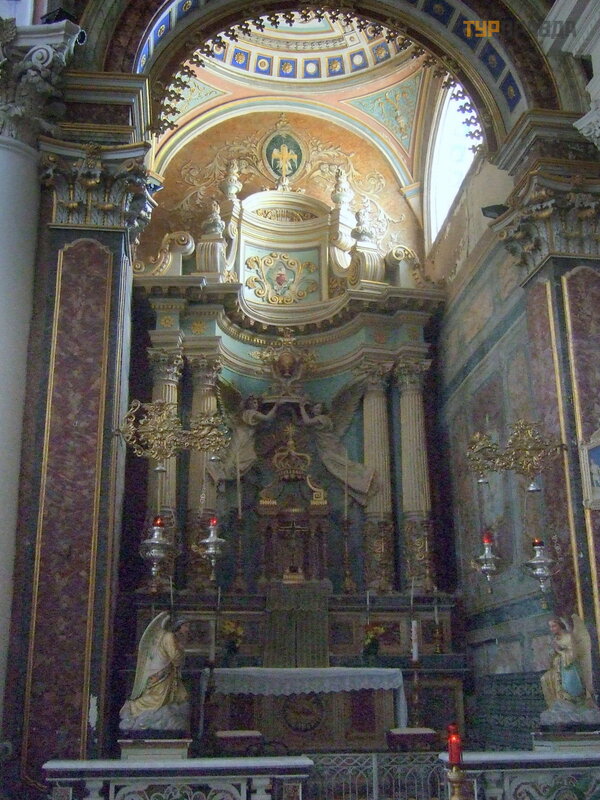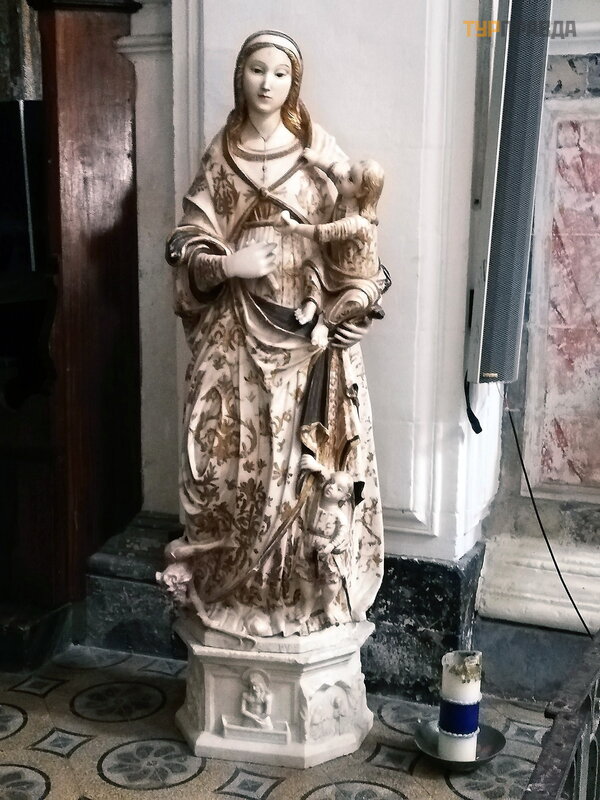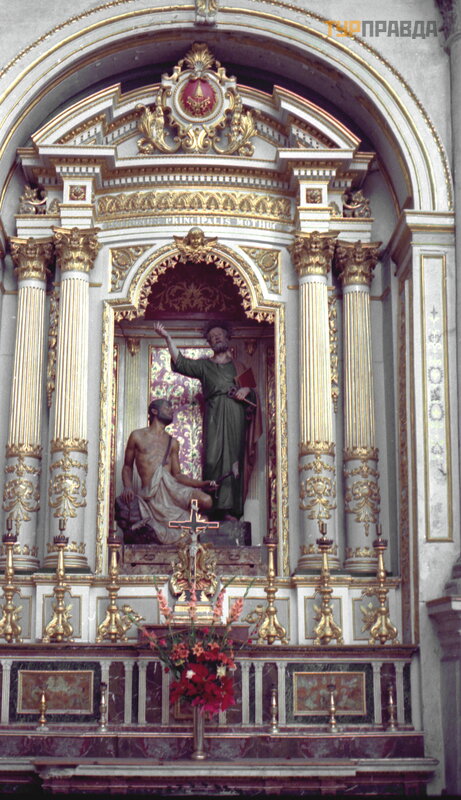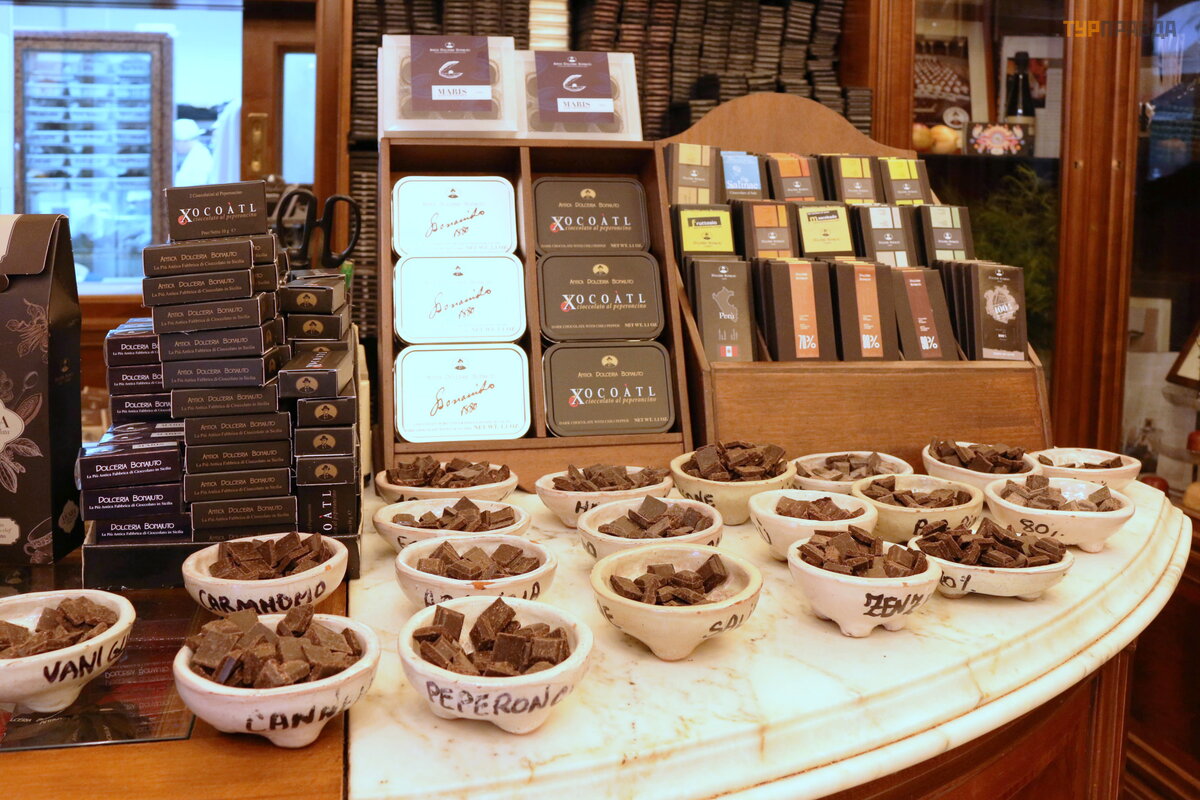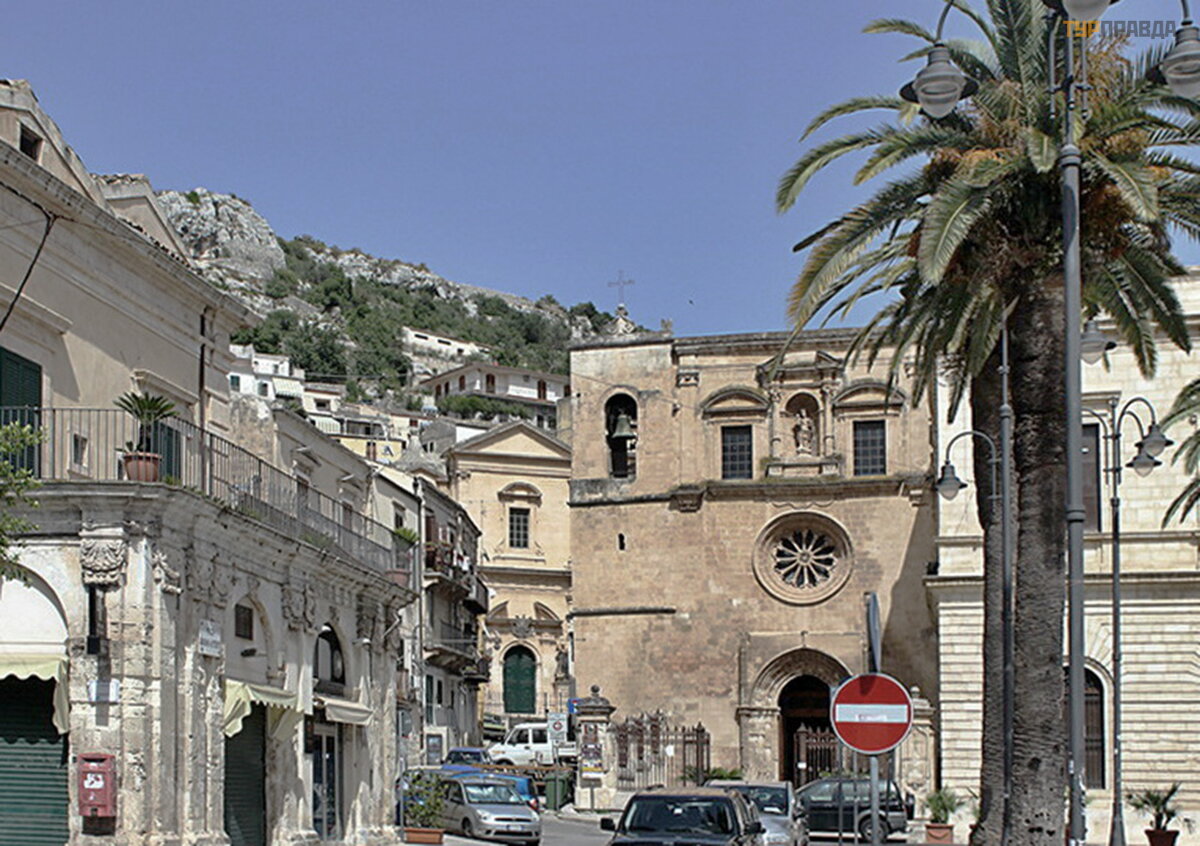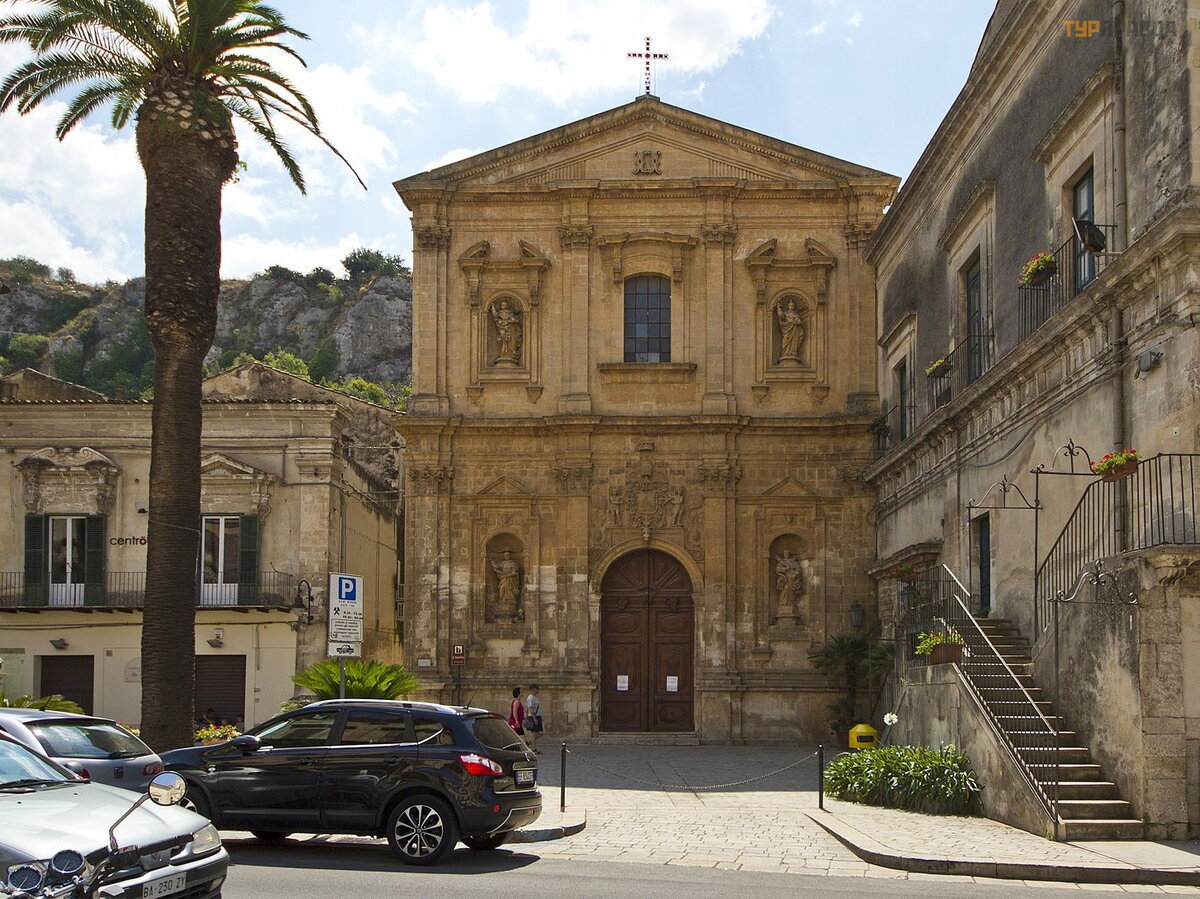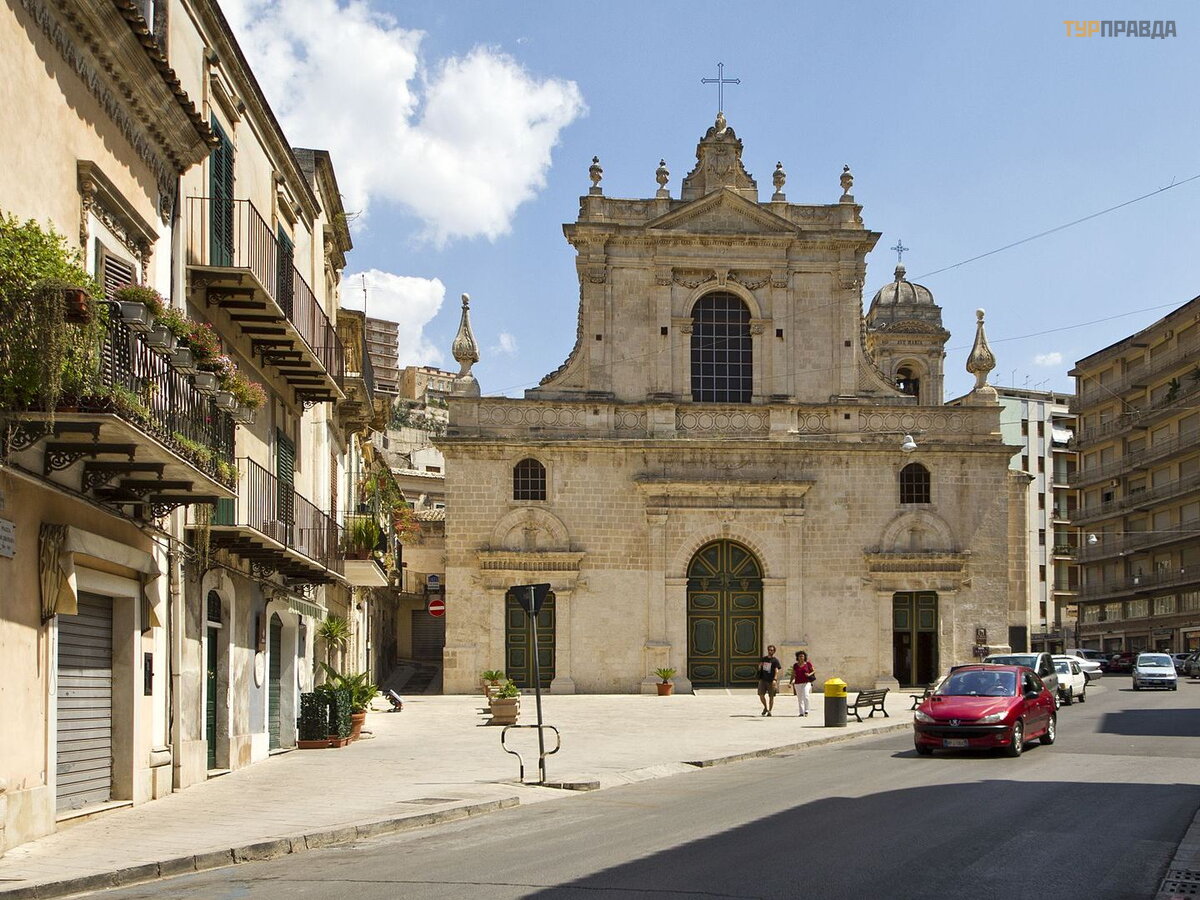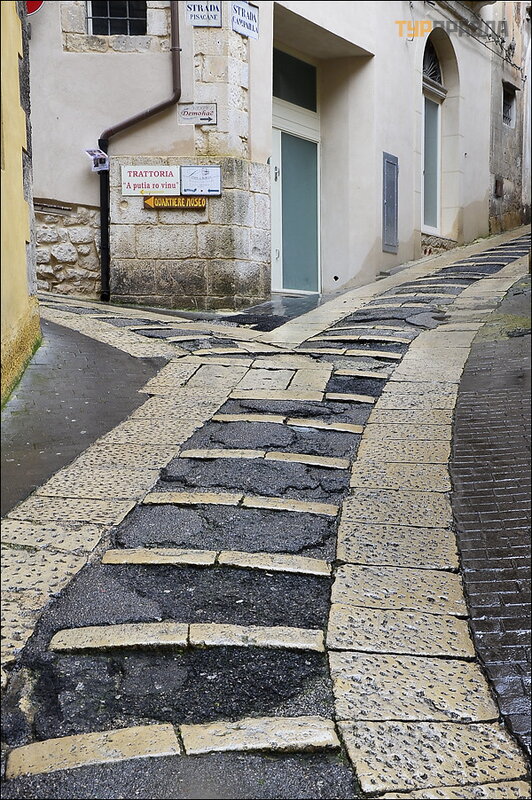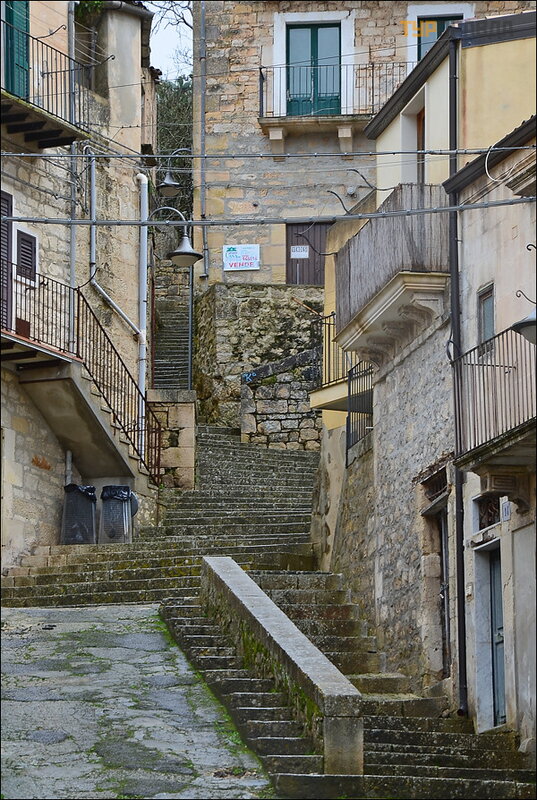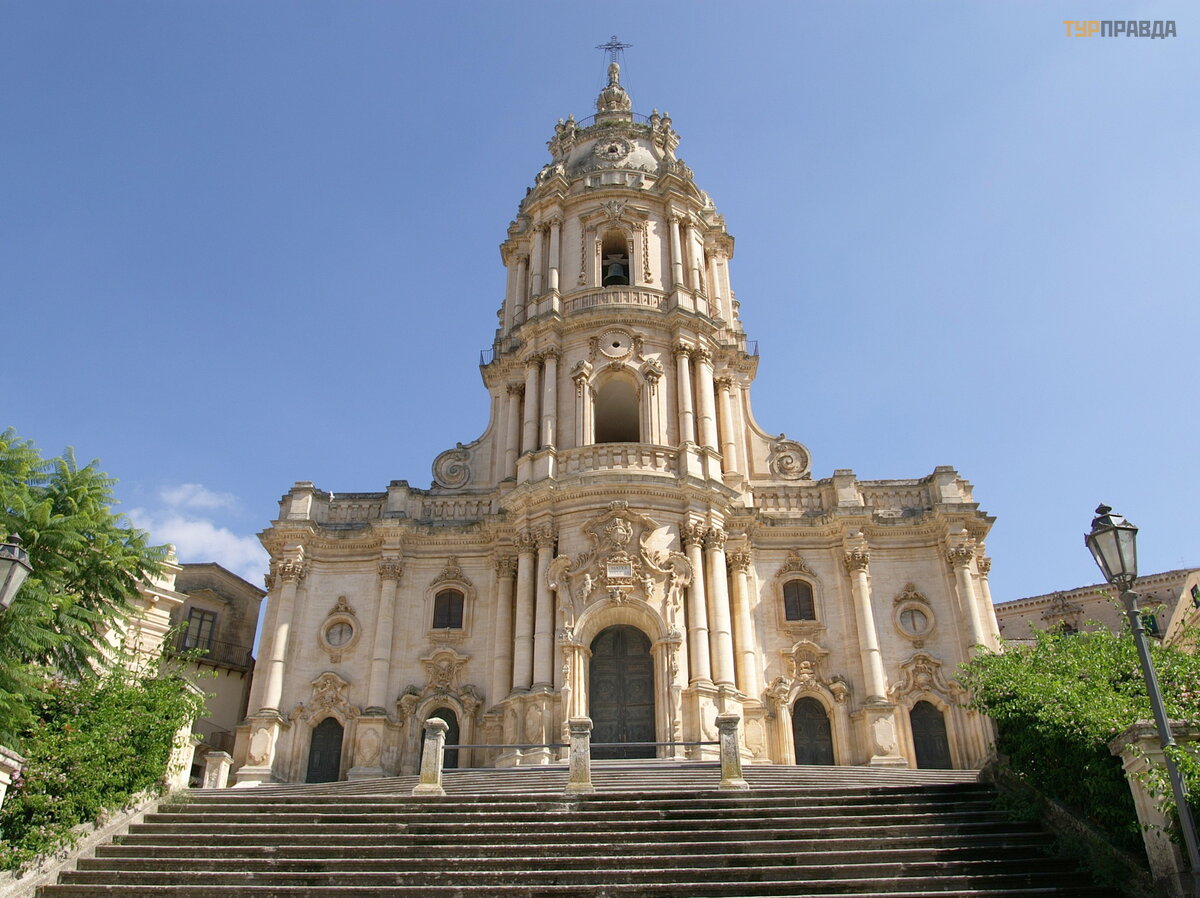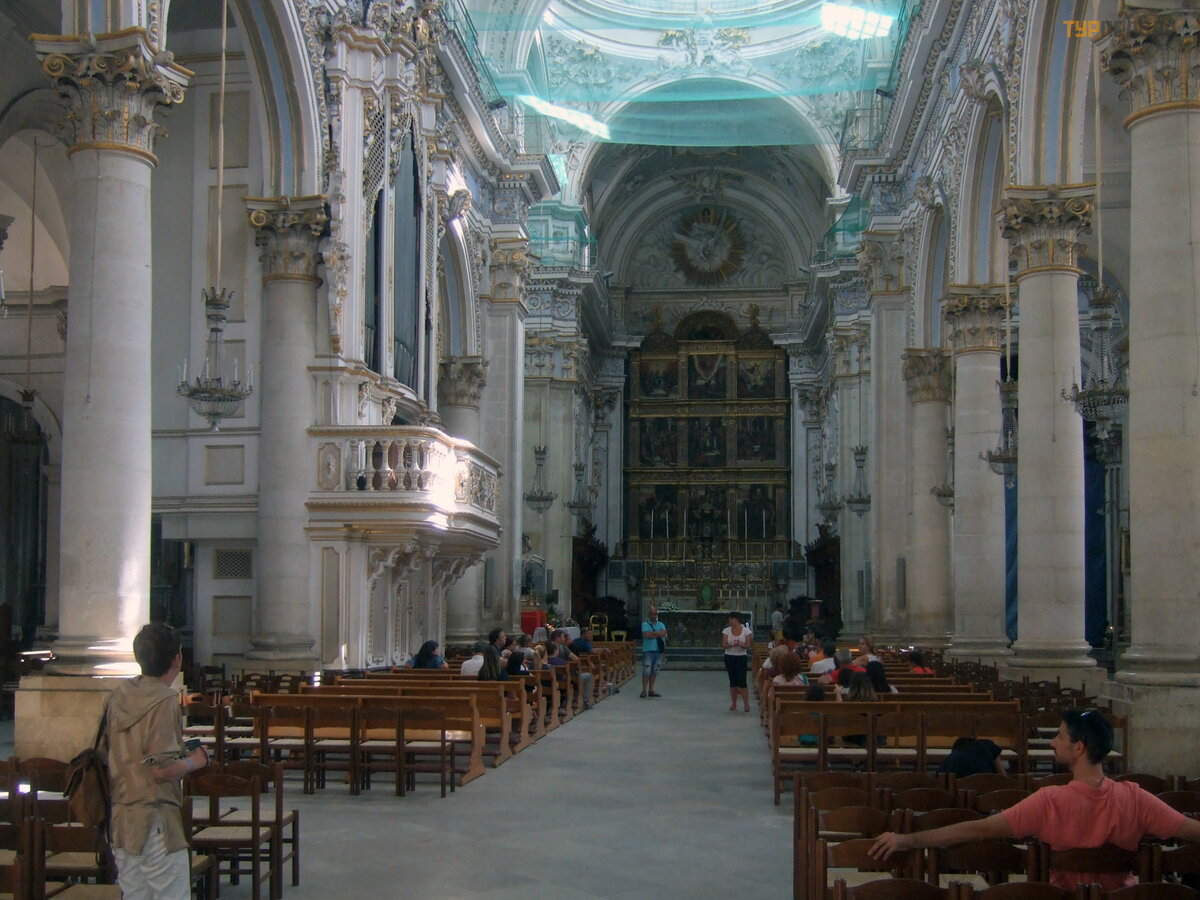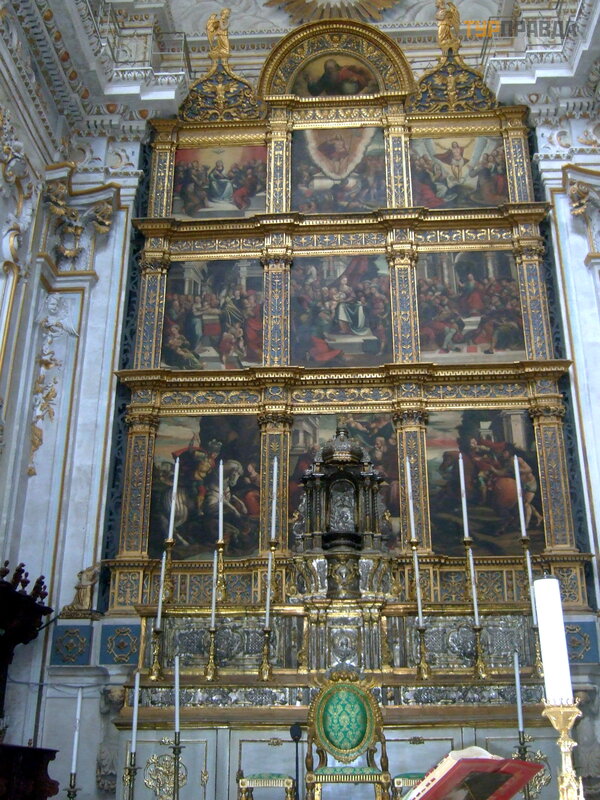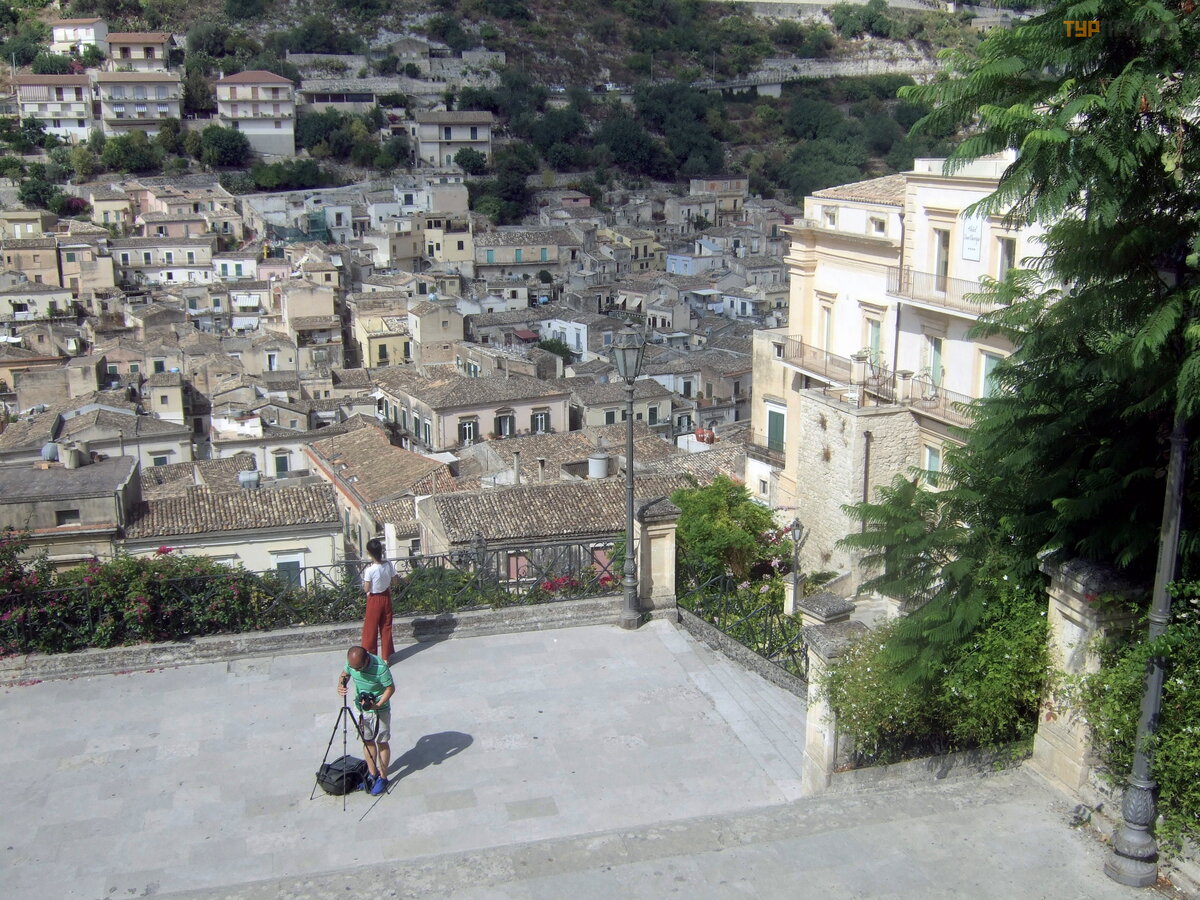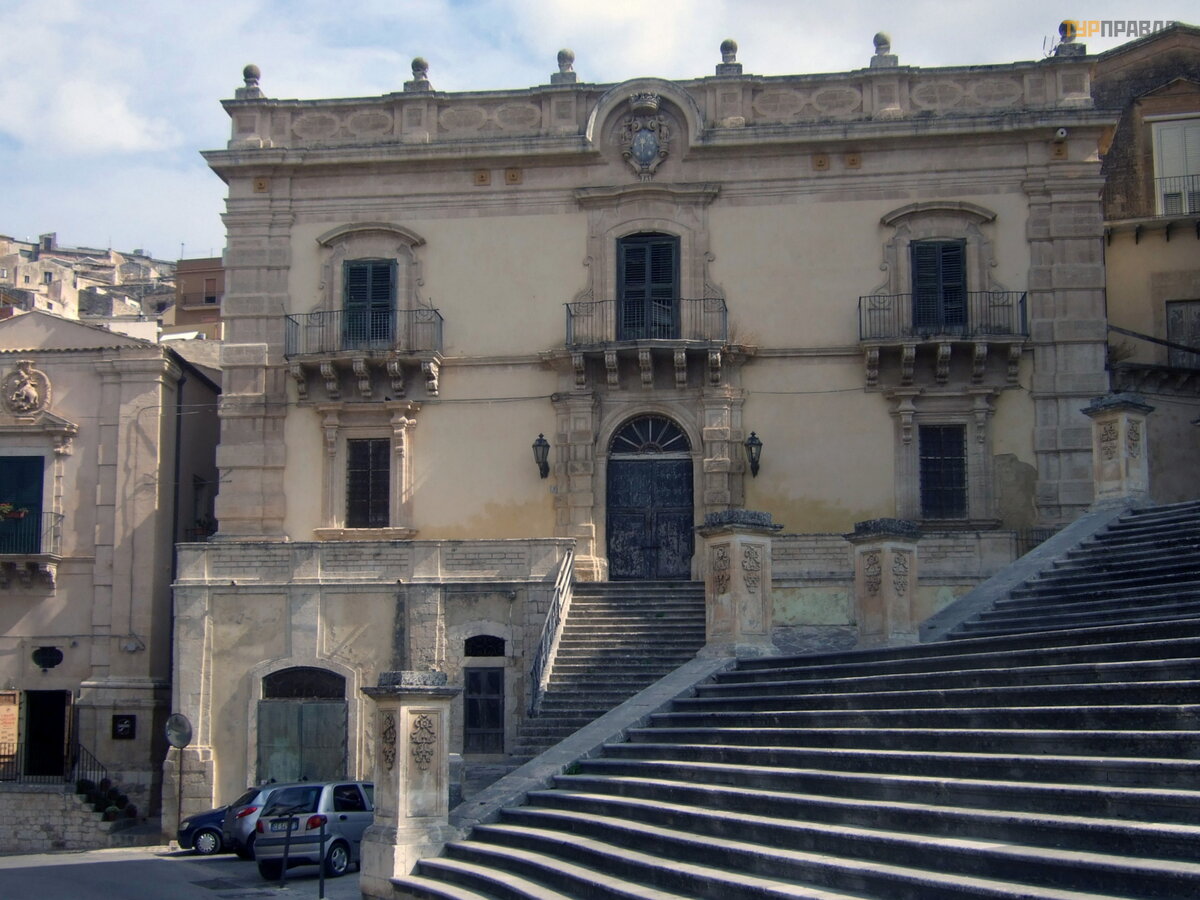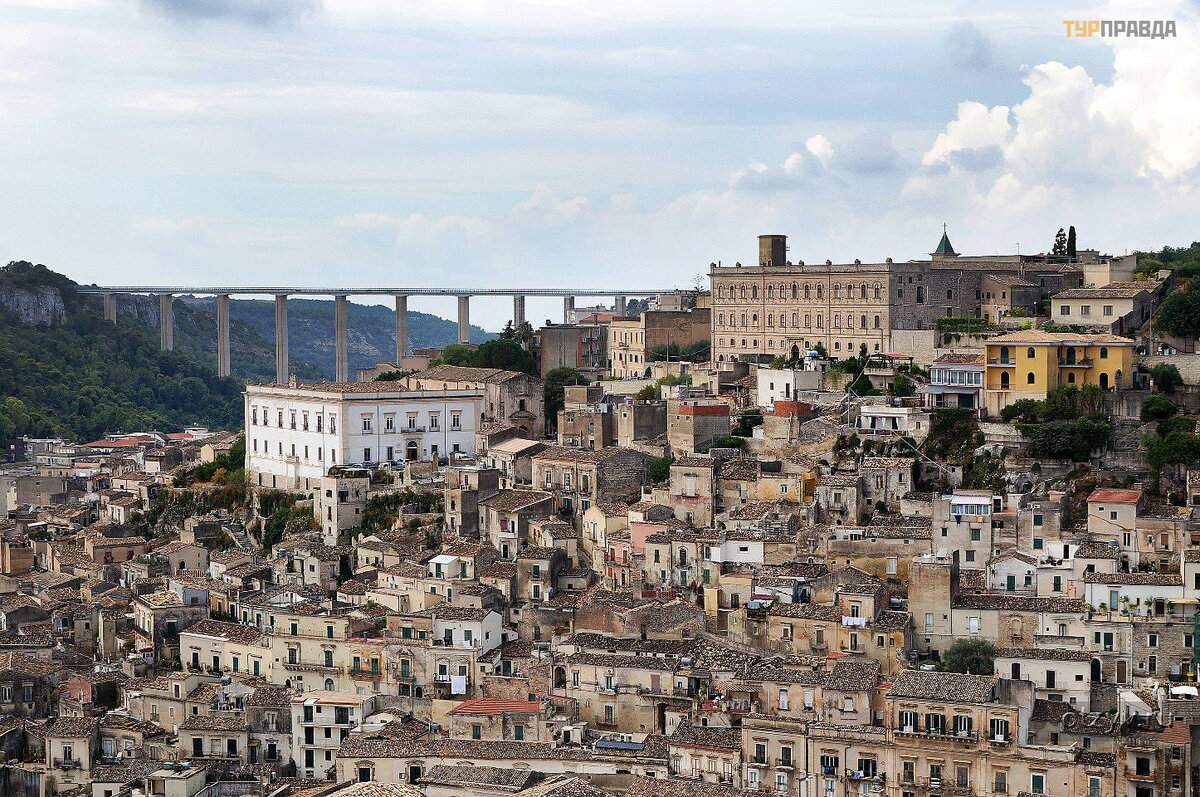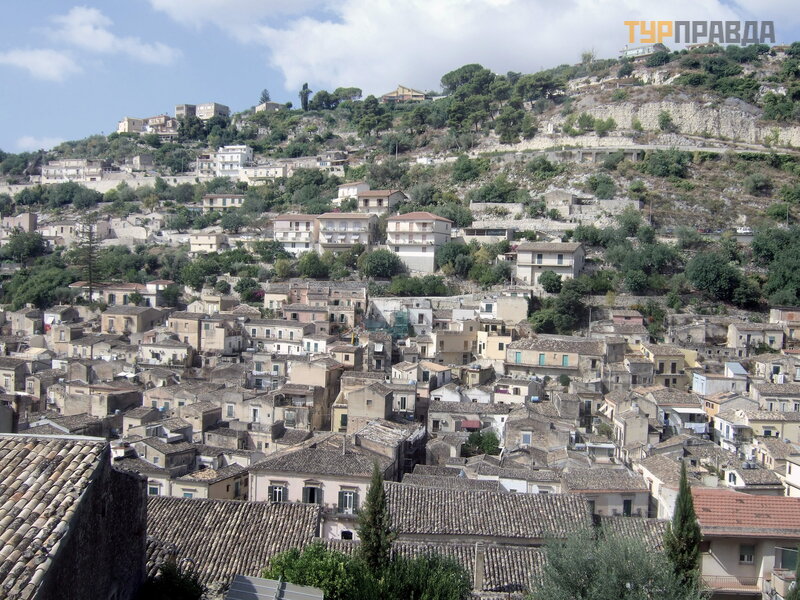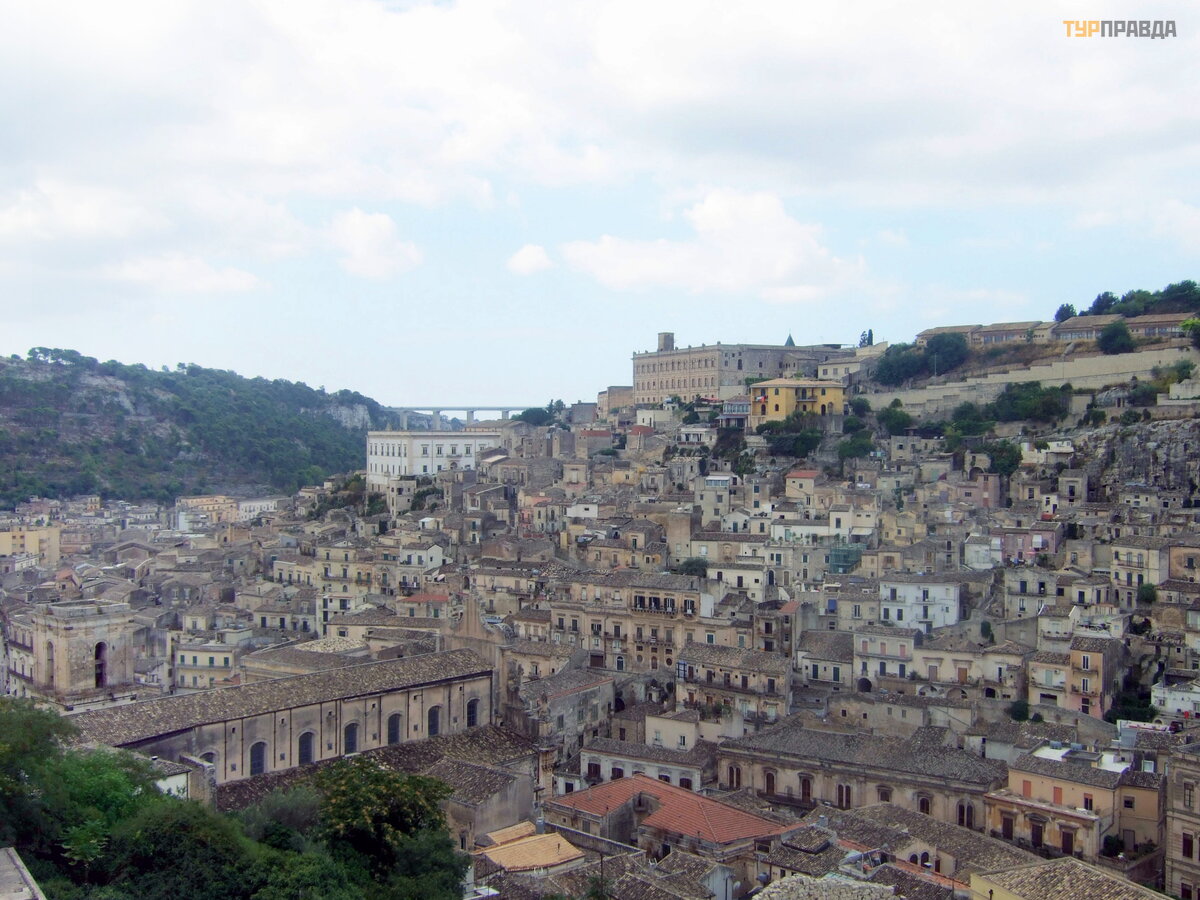Sicily. Part 8. Modica

Sicily. Part 1. Giardini Naxos >>>
We visited Modica and Ragusa by renting a car with a driver. We cooperated with two more women from our hotel, a friend of the driver, we were wooed by a hotel guide. The price of the issue is 200 euros for six hours. We left the hotel immediately after breakfast in order to have time to see the churches before the siesta.
The first city of the route was Modica. The city was founded by the ancient Greeks a thousand years BC. e. The name of the city comes from the Phoenician word Mutika (dwelling).
Now it is a fairly large city with a population of about 55.000 inhabitants. The city is located on the slopes of the Iblean mountains and is divided into lower Modica (Modica Bassa) and upper Modica (Modica Alta). Lower Modica is the modern part of the city with shops, restaurants, cafes, while Upper Modica is the historical center of the city, included in the UNESCO World Heritage List.
Not far from the city we saw the New Bridge (1967) - Guerrigeri - the highest in Europe (538 m), but we did not drive along this route.
We left the car in Lower Modica. . .
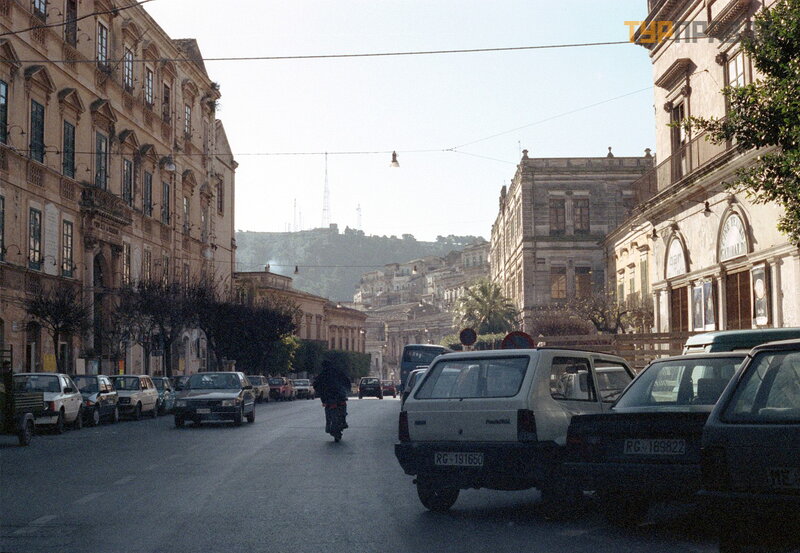
. . . near the Cathedral of San Pietro (Lower Duomo - Duomo Basso), which is also included in the UNESCO World Heritage List. This is another impressive example of Sicilian Baroque with a main faç ade topped by a typical Sicilian Baroque bell tower 49 meters high.
After the earthquake of 1693, the church was restored, and its facade is decorated with four statues that depict San Cataldo, Santa Rosalia, St. Peter and the Madonna, and the top of the facade is crowned with a sculpture of Christ.
The stairs to the cathedral are decorated with full-length figures of the apostles, which only enhances the effect of the grandeur of this cathedral.
Luxurious baroque interior, frescoes were painted by local masters father and son Ragazzi.
The main relic of the cathedral is a part of the hand of St. Peter, kept in the Chapel of Relics.
The marble statue of the Madonna della Mazza, made in 1507 by Giorgio Brigno, is also considered very valuable. The statue stands in the chapel of the Immaculate Virgin, fortunately surviving after the earthquake.
The faithful especially revere the chapel of San Pietro, where in the niche of the altar there is a sculptural group carved from oak depicting St. Peter and the paralytic. It is believed that prayers said in this part of the temple will bring healing from diseases.
Because we had limited time, we decided to explore Lower Modica first and meet at the car in an hour.
View of the houses of Upper Modica:
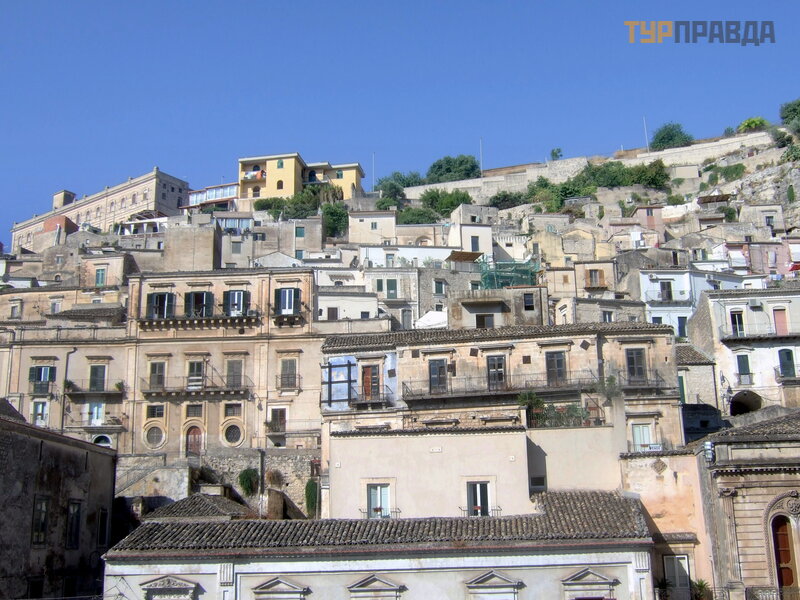
Let's go for a walk along the main street - Corso Umberto. It is interesting that earlier it was a riverbed with numerous bridges. Due to frequent flooding and the severe flood of 1902, it was decided to let the river underground.
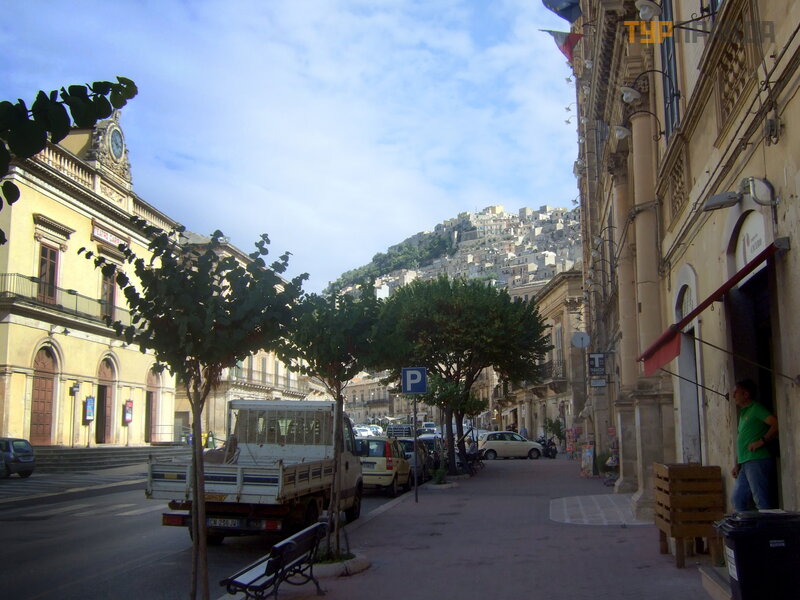
There are many houses in the Sicilian Baroque style in the city.
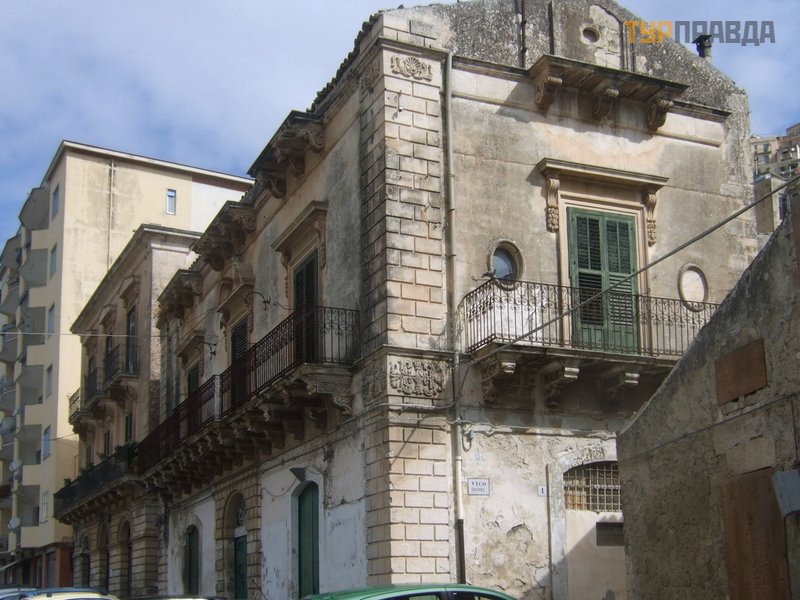
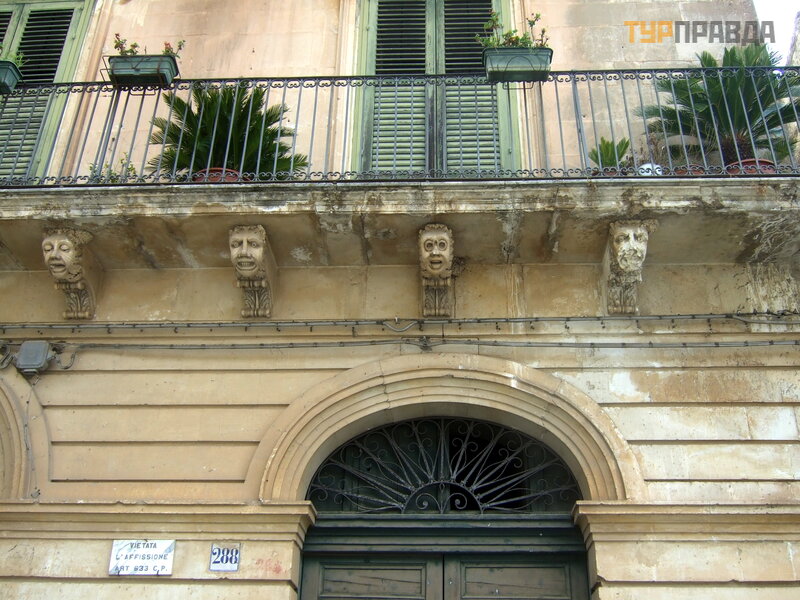
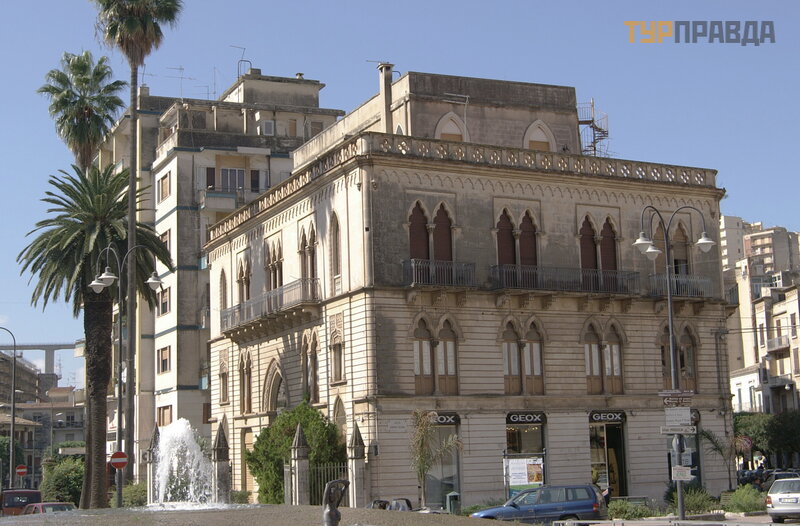
Each house with monograms, massive wooden doors in a luxurious arched frame, with interesting balconies supported by grinning masks, a characteristic feature of the Sicilian Baroque.
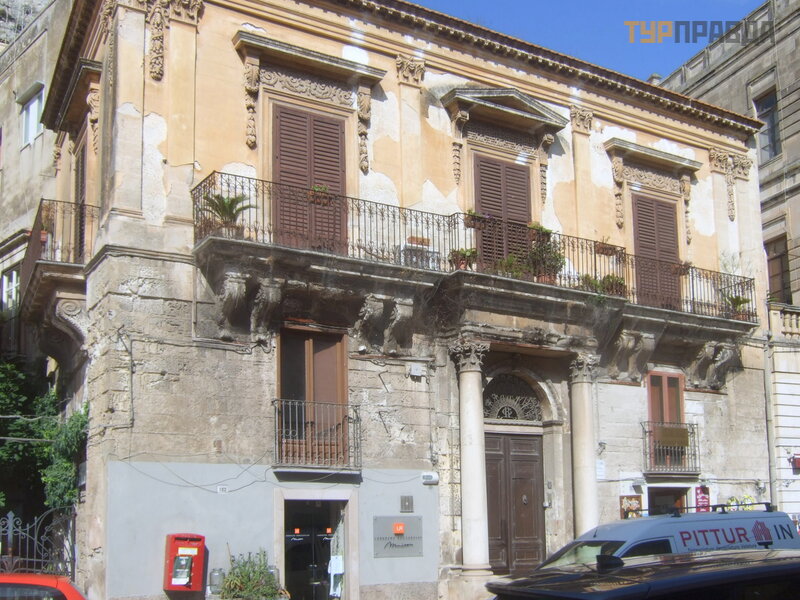

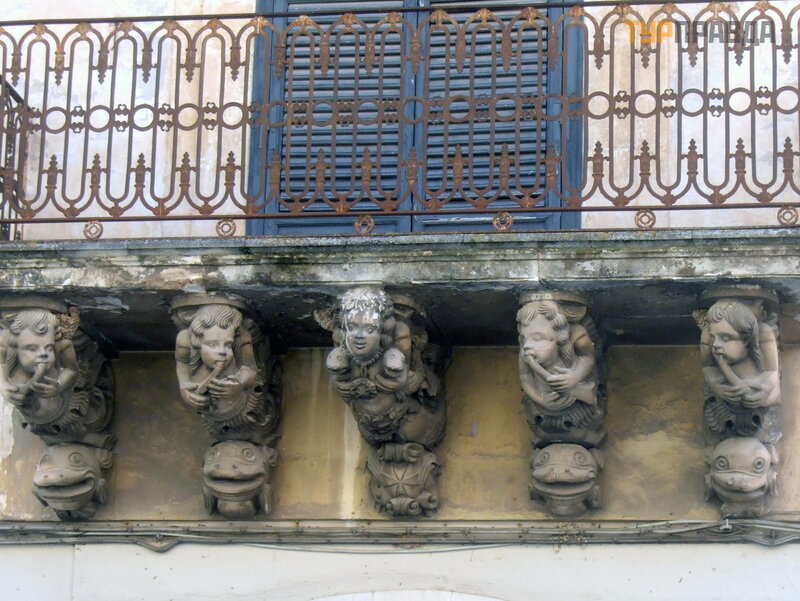
We went to taste Modiki's chocolate in the Antica Dolceria Bonajutoс brand store. Chocolate with different fillings - with pepper, cinnamon, vanilla, wine, etc. Modica is considered one of the chocolate capitals of Italy. The Chocobaroque festival is held annually in December.
Chocolate was brought to Europe after the conquest of America by the Spaniards in the 16th century - at that time Modica was part of the Spanish kingdom and it was Modica who preserved the recipes for making chocolate in a cold way, as the Aztecs did in Mexico. The chocolate is coarse grained.
To be honest, I didn't really like this chocolate. Prices are quite high - 3-5 euros per tile.
Didn't buy.
City building:
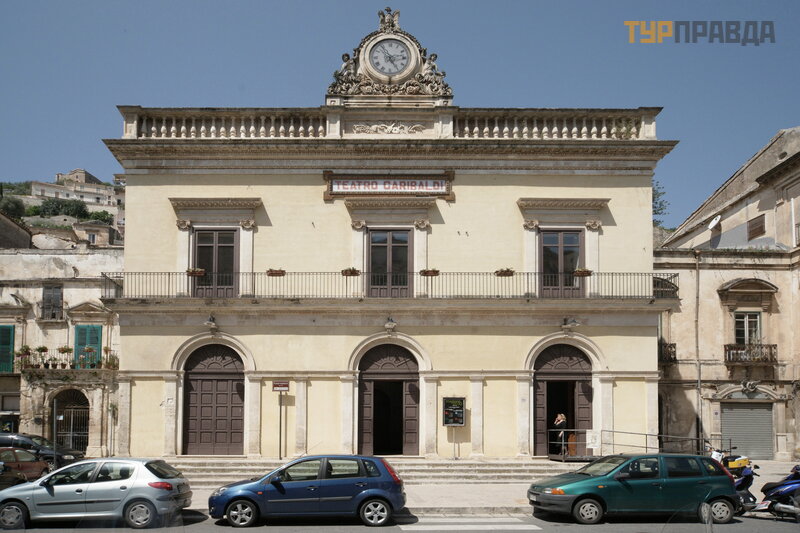
At the top of the mountain, you can see the Castello dei Conti castle, built in the 13th century, for centuries it has been the seat of political and administrative power of the historic district of Modica. The castle was badly damaged after the earthquake of 1693, the watchtower with the clock of 1725 survived.
Further in a small square, the Carmelite Church (Chiesa del Carmine) is one of the oldest churches in Modica. It was built in the late Gothic style in the 13th-14th centuries, and one of the few that survived the earthquake of 1693.
Immediately behind it is another church of San Domenico:
Corso Umberto ends here, and so does the Lower Town. We bought wine for lunch at the store and went back.
We climbed a little uphill to the church of Santa Maria di Betlem with the royal chapel (Santa Maria di Betlem):
Behind this church, the streets go up towards the castle and into the Modica Alta (Upper Modica) area:
Modica Alta is located on a hill of 150 m. Therefore, the streets turn into stairs every now and then.
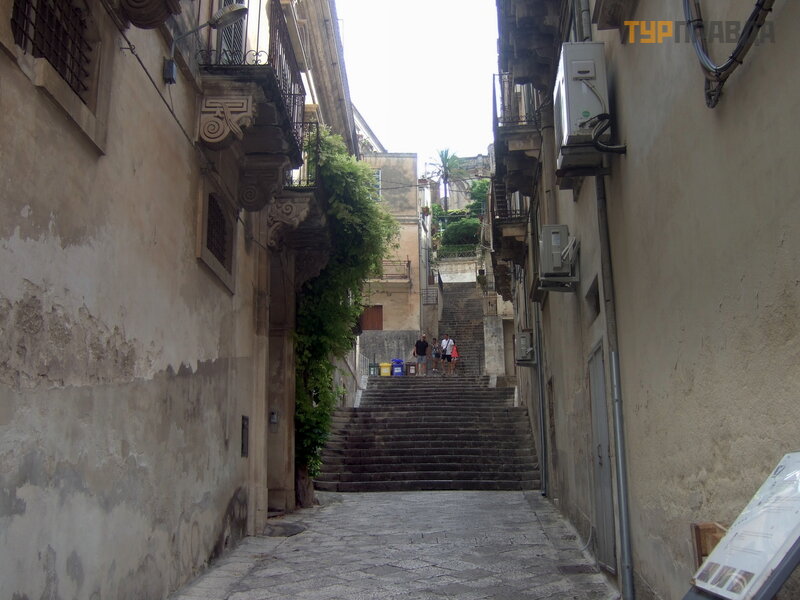
We did not go up on foot, but arrived by car to another cathedral of Modica - the Cathedral of San Giorgio (St. George), it is called the "Wonder of the World in the Baroque world".
Its height is 62 m. The cathedral was supposedly built according to the project of Rosario Gagliardi, it took a long time to build, the first tier was completed by Paolo Labisi from Noto only in 1761.
The central nave of the cathedral is framed by 22 Corinthian columns.
The decoration is rich in stucco and gilding.
The cathedral was painted by an artist from Messina, Girolamo Alprandi, nicknamed the "Sicilian Raphael".
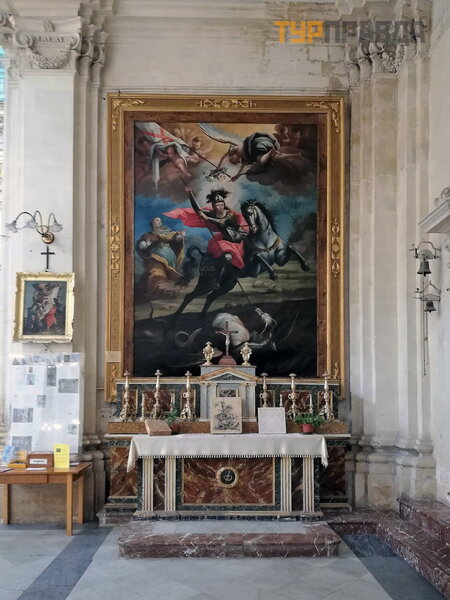
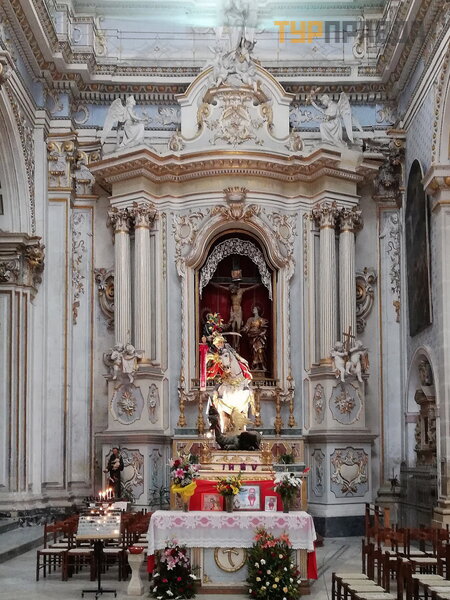
Special attention deserves a magnificent wooden polyptych dating from 1513:
The monumental staircase with 164 steps was built in 1814-1818 by the architect Francesco di Marco, in subsequent years it increased to 254 steps.
On the sides of the Cathedral are palaces: on the right - the Polara Palace, on the left - the Grimaldi Palace. The Grimaldi Palace was built in the 18th-19th centuries. Now here is the Pinakothek with the works of local masters.
After admiring the panorama of Lower Modica, the same high bridge is clearly visible:
Saint Peter's Basilica below:
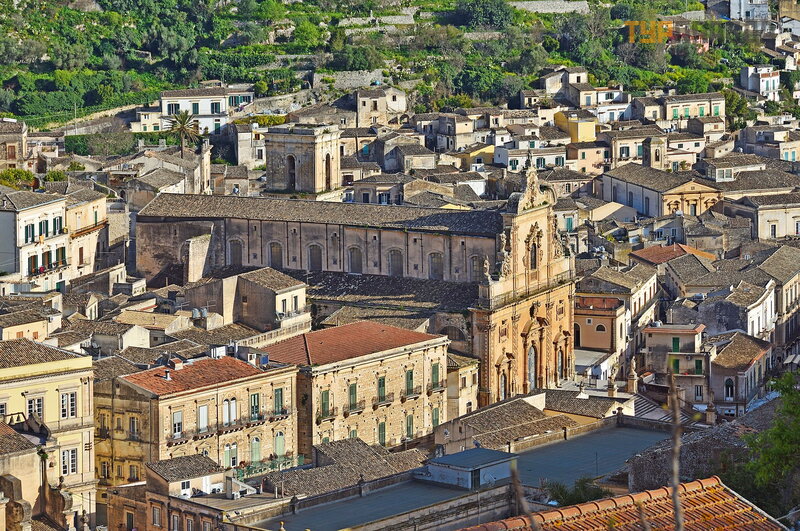
After seeing Modica, we headed to Ragusa. About this in next story >>>

